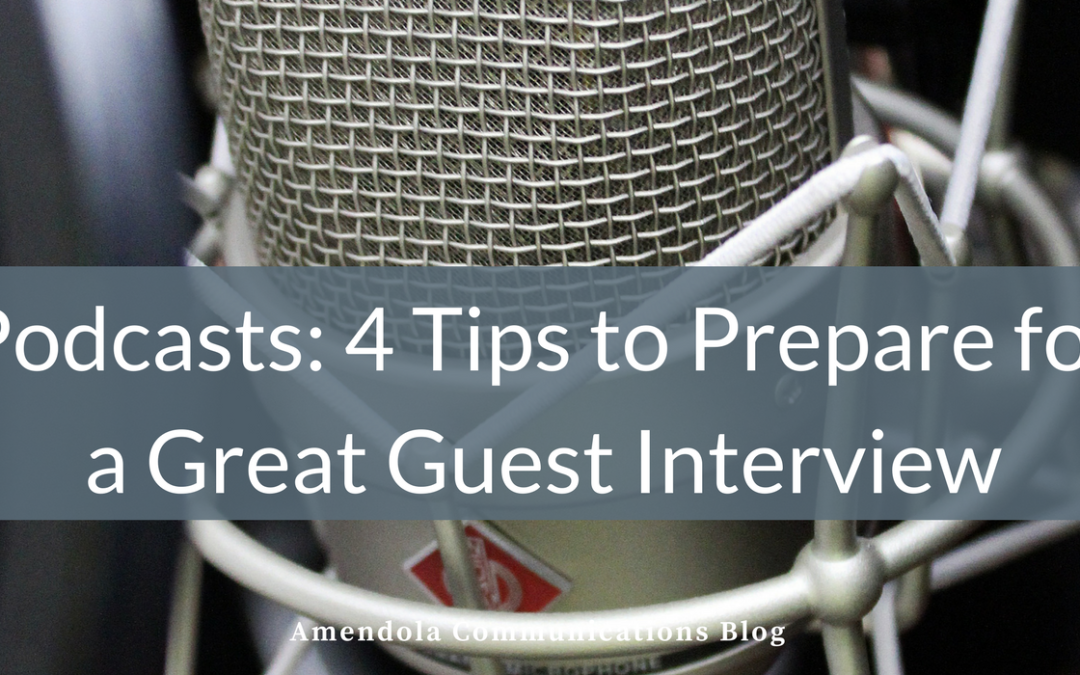
by Chris Nerney | May 28, 2025 | Blog
Some health technology entrepreneurs are absolutely convinced their company has a unique, revolutionary solution that will transform healthcare. And they will not hesitate to tell you!
Most, however, are more grounded. They only have to look around to see that the problems their solution is designed to solve – whether it’s clinical data quality, patient identity, billing accuracy, etc. – have attracted the interest of other clever and well-intentioned people. They have competition! Worse, some of these sector rivals are well-funded.
Which doesn’t mean your solution is any less genuinely transformative to healthcare consumers, providers, payers, or researchers. What it does mean is you likely face a formidable challenge in rising above the noise in your sector to attract and capture the attention of potential customers and investors. After all, there are a lot of stories being told out there.
So how can healthcare PR and marketing pros make their company’s story compelling enough to break through and stand out in a crowded market? For starters, health tech companies can gain a market advantage by clearly articulating (and repeating) across multiple channels what problems their solutions solve and how these solutions benefit patients. Why should customers choose your solution and not a competitor’s? You need a great answer to that question.
Hone your marketing language to highlight your company’s competitive differentiators. Once you’ve locked in on a framework for your messaging, you can deploy several specific techniques to help your health tech company rise above the clamoring masses. These include:
Practice precision marketing
The marketing messages that resonate with potential customers such as provider organizations or payers may not resonate with investors. While a hospital or health plan will want to know what your technology costs and how it would help them improve care quality or operational efficiency, they’re not interested in a graphic showing the projected growth of your startup’s market sector. Investors, on the other hand, care deeply about a sector’s growth potential as well as a prospective portfolio company’s strengths and weaknesses (particularly its technology and leadership team) relative to the competition.
It is essential that you learn the needs and pain points of each target audience and then tailor a message that specifically addresses them. Try to get feedback from members of your target audience (or people who understand their concerns and priorities) and then modify as necessary.
Go multimedia
We may be in the technology business, but humanity sells. The human connection is a powerful thing; people like to hear and see other people talk. That’s one of the reasons why podcasts have become so popular. If there is someone in your company who could shine on a podcast, do not hesitate to get that person some training and some bookings.
No matter how nervous your subject matter expert may be, once they see the positive response internally and externally, they’ll be pestering you for more podcast opportunities. Then they’ll ask for help getting an agent.
You also can use multimedia in social media and in press releases. Spice up your messaging with pictures, graphics, and even short videos. You won’t need to hire a crew for a three-camera shoot, either; videos can easily be recorded on a smartphone.
Get customers to tell their story
I know, it’s one of the hardest things in marketing. A health tech company’s customers – whether they’re a hospital, health system, payer, or academic center – may not want to get involved in your marketing efforts because 1) they’re pretty busy doing their own jobs, and 2) they worry about being perceived as shills for a vendor. From their perspective, those aren’t unreasonable concerns.
But you won’t know what your customers say until you ask. Suggest doing a white paper on their experiences with your solution or ask for one of their spokespeople to join you on stage at an industry conference or for a podcast. People like to talk about their successes and impart advice to colleagues. It’s all upside to them.
One great selling point for healthcare marketing and PR pros who are trying to get a customer to share their experiences is to emphasize that the customer’s story (and yours) centers around how they were able to better serve patients using your technology, not the merits of the technology itself (which should be apparent in the telling of the story). Again, it’s an opportunity for the customer to talk about what they’re doing to help patients, research, or efforts to control healthcare costs.
Conclusion
To succeed in highly competitive markets, health tech vendors need a coherent message centered around how their solution benefits both patients and potential customers. By tailoring these messages to targeted audiences, leveraging the power of multimedia to build human connections, and working with customers to communicate powerful success stories, health tech vendors truly can stand out in a crowded market.

by Chris Nerney | Mar 3, 2021 | Blog
Podcasting has entered the mainstream. More than one-third (37%) of Americans age 12 and over listen to podcasts at least every month and 24% listen weekly, according to Edison Research. Given that this data is from a report published last March, you can be assured the numbers today are higher.
My colleague Brandon Glenn wrote an excellent post in May 2018 offering tips to healthcare professionals who may be appearing as guests on a podcast. While that advice still stands, these days your company may be considering launching a podcast of its own.
That’s what one of Amendola’s clients recently did. And that client, the Foundation for Chiropractic Progress (F4CP), has done an outstanding job! F4CP is a non-profit organization dedicated to educating the public about the benefits of chiropractic care.
Its podcast, Adjusted Reality, debuted in late December and had 1,000 downloads in the first five days. In a world where most podcasts don’t survive past seven episodes, that’s an extremely successful launch.
So what did F4CP do right? A bunch of things.
They have an engaging, upbeat host in Dr. Sherry McAllister. They settled on a format that works for them (interview). They snagged high-profile guests for their first three episodes, including Dr. Deepak Chopra.
And they have a clever name for the podcast. (Actually, Amendola VP Tara Stultz gets credit for coming up with the title Adjusted Reality, while an F4CP intern came through with the equally clever tagline, “Trusted by the Adjusted.”)
There are other things F4CP did well, including a smart launch strategy and effective promotion. But what I want to focus on in this post is the most important element of all in ensuring your podcast can attract and build an audience: quality content.
Podcasts are no different than any other medium of communication. If you have nothing to say, or don’t know what to say, you are doomed to failure.
The good news is that your business already should know what it wants to communicate, and it also should know its target audience. Both of those will help you devise a winning content formula for a podcast.
It’s also critical to tie your podcast content strategy to your business strategy. That should be easy.
You want to raise awareness of your brand in your target audience. You want to position your company as a thought leader and trusted source of information.
And you want to establish a relationship with your target audience. All of these eventually will pay off in revenue and business growth.
Podcasts are particularly effective in helping establish relationships and positioning yourself as a thought leader because they are a very human form of communication. The voice is a powerful instrument for connecting with other people.
We’ve all been drawn in by charismatic speakers, whether we heard them in person, on the radio, or television. Podcasts also leverage the power of the human voice.
But only if that voice has something to say that resonates with your intended audience! Which gets back to your content.
Your podcast can’t be a sales pitch. All that will accomplish is to drive away listeners.
Instead you want to address their needs and concerns in a way that is helpful to them. In other words, provide value. That’s the same strategy you would use in crafting a thought-leadership piece or an op-ed.
Podcasts are a dynamic way to reach your target audience. They can be a lot of work, but there’s a real payoff when you realize you’re making a connection with people and building a reputation as a trusted authority. But it all starts with your content strategy.

by Brandon Glenn | May 2, 2018 | Blog
Someday, you may be able to tell your grandchildren you lived through the golden age of podcasts.
From the humble beginnings of first being listed in iTunes in 2005 to the emergence of “Serial” as the medium’s first breakout star in 2014, podcasts have evolved from “the nichiest, wonkiest content platforms to a star-studded, self-contained media ecosystem with hundreds of millions of dollars in annual advertising revenue,” according to Wired.
Plenty of Americans have noticed. A report last year from Edison Research found that 112 million Americans had listened to a podcast, a jump of 11 percent from the prior year. Overall, 40 percent of Americans age 12 or older have listened to a podcast at some point, and the demographics don’t skew as youthful as you might think. For the first time, more Americans aged 25 to 55 were monthly podcast listeners than those aged 12 to 24, the report found.
Podcasting has, of course, made its way into healthcare, just as it has with other industries. Popular healthcare podcasts include TEDtalks Health, Harlow on Healthcare, Mayo Clinic Radio and Healthcare Tech Talk, just to name a few.
So there’s a fairly strong chance that you or an executive you work with will be asked to appear as a guest on a podcast if it hasn’t happened already. If and when that happens, following the tips below will help ensure a successful podcast, and hopefully a return invitation. (Many of these recommendations are applicable to media interviews, in general.)
- Research the podcast and host: In short, do your homework. Nothing says, “I have no clue why I’m doing this interview, but my public relations person told me I should, so here I am,” like an interview subject who doesn’t know the name of the media outlet (podcast) or reporter (podcast host) that he or she is speaking with. In such circumstances, trust me that the host is not blind to the apathy and indifference the subject is showing toward the podcast, and it will immediately start the interview in a negative place. Research the host’s background and listen to a few episodes. What topics does the show cover? Does it have an agenda, or is it fairly neutral? What is the background of other guests? In some cases, interviewers will use a standard opener (“Tell me about yourself and your company.”) and closer (“Anything else you want to mention?”). By identifying those routine questions ahead of time, it’s easy to be prepared to knock them out of the park.
- Hone your message: Really, there’s no reason not to knock virtually every question out of the park, as long as you’ve prepared a few talking points. Here’s where the research you did in the prior step comes into play. Once you’ve identified what the show is about and who the audience is, tailor your talking points to individuals in those professions. If it’s a podcast about a niche like electronic health records, for example, you can bet the audience is generally very knowledgeable on the topic, so feel free to get as far down into the weeds as you like. If it’s a general healthcare podcast that runs the gamut of the industry, keep the talking points more brief and high-level. Be sure to write out your talking points, keep them in front of you during your interview, and hammer these key themes multiple times, so listeners have no doubt about what you and your company are about.
- Think about sound quality: To state the obvious – podcasts are something people listen to, so sound quality is kind of important. If you’re being interviewed over the phone, use a landline. If the interview is via Skype or a similar application, be sure your internet connectivity is strong. In either case, using a good quality headset is definitely a plus. Find a quiet place with a closed door away from dogs, kids, coworkers or any other distractions. Finally, be sure to have a cup of water (or another favorite beverage) next to you at all times to avoid a scratchy, hoarse-sounding voice.
- Promote the interview: Before the interview, post messages on your social channels previewing it and sharing your excitement about appearing. Tag the host, who will notice it and appreciate it. After the interview do the same, thanking the host for an enjoyable and stimulating conversation. Post it on your website and include it in any relevant e-mail campaigns, too. You worked hard to prepare for the podcast, so be sure to get as much mileage out of the appearance as possible.
Podcasting is certainly enjoying a cultural moment, but the medium likely has more staying power than just a moment. Despite the surge in popularity noted in the statistics above, Edison’s report found that just 60 percent of Americans are “familiar” with the term podcasting.
That means podcasting holds strong growth potential as the other 40 percent of the nation begins to discover the medium in the coming years. When you or a colleague receive your first invitation, remember these tips to prepare for a successful podcast guest interview.



